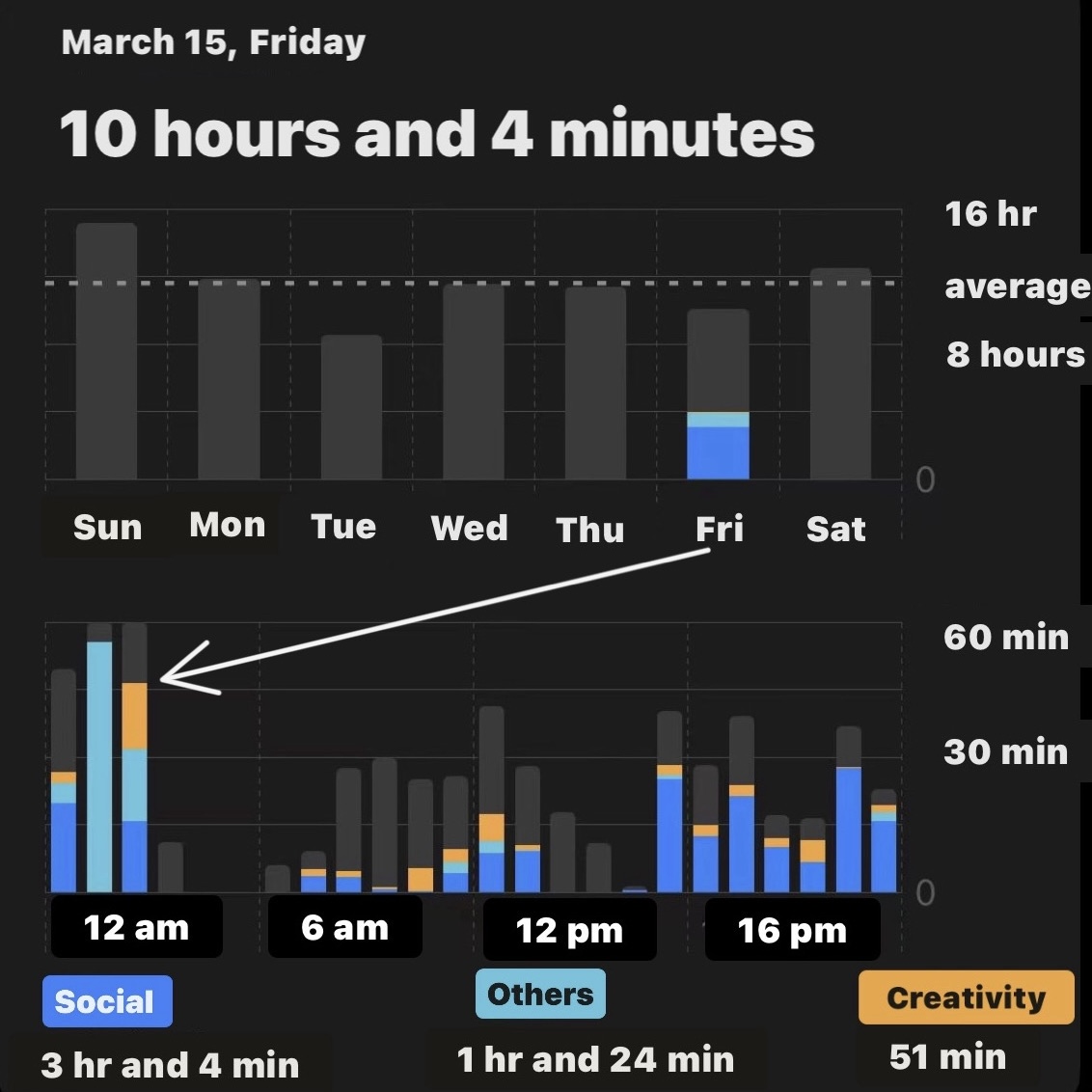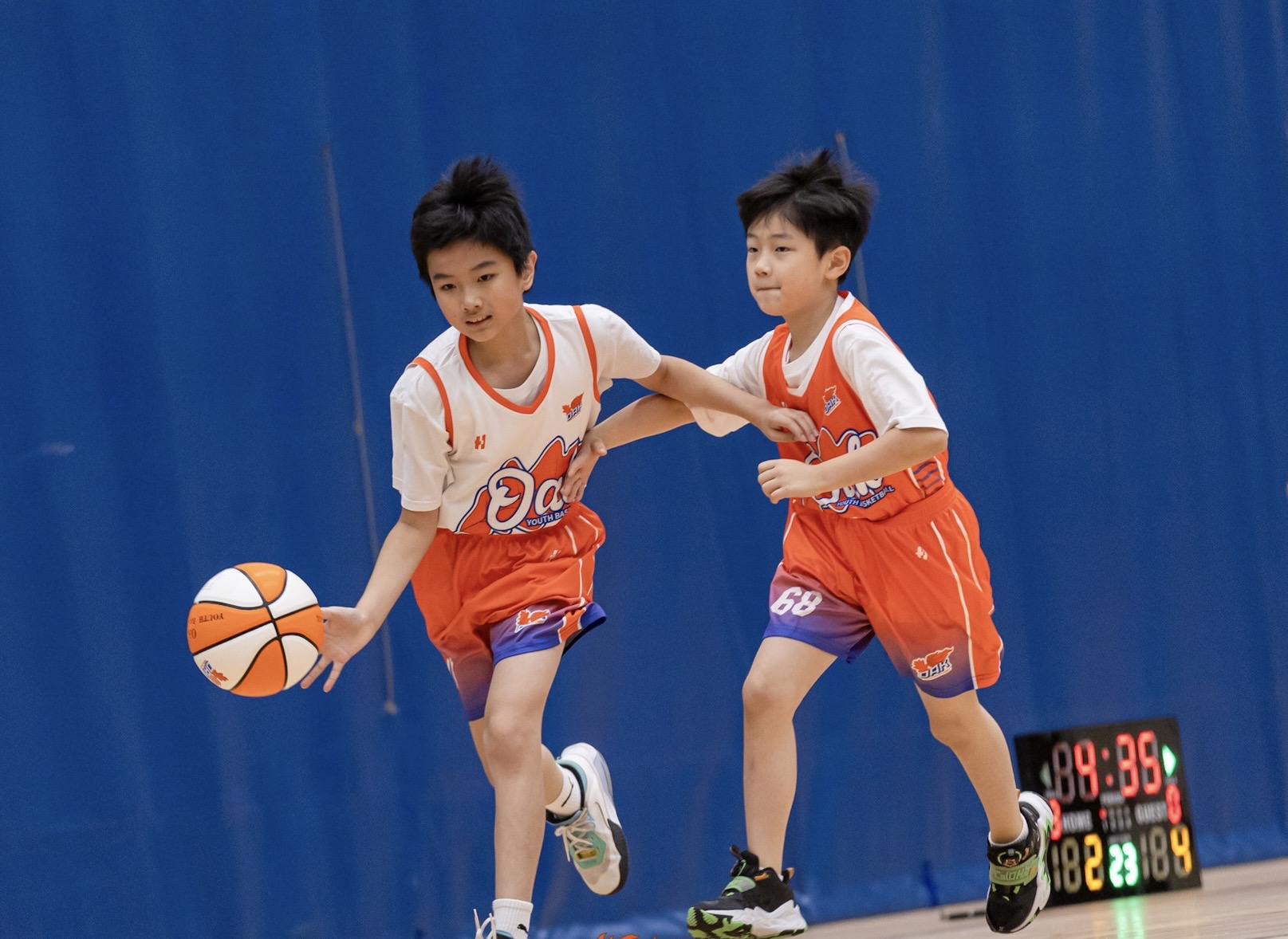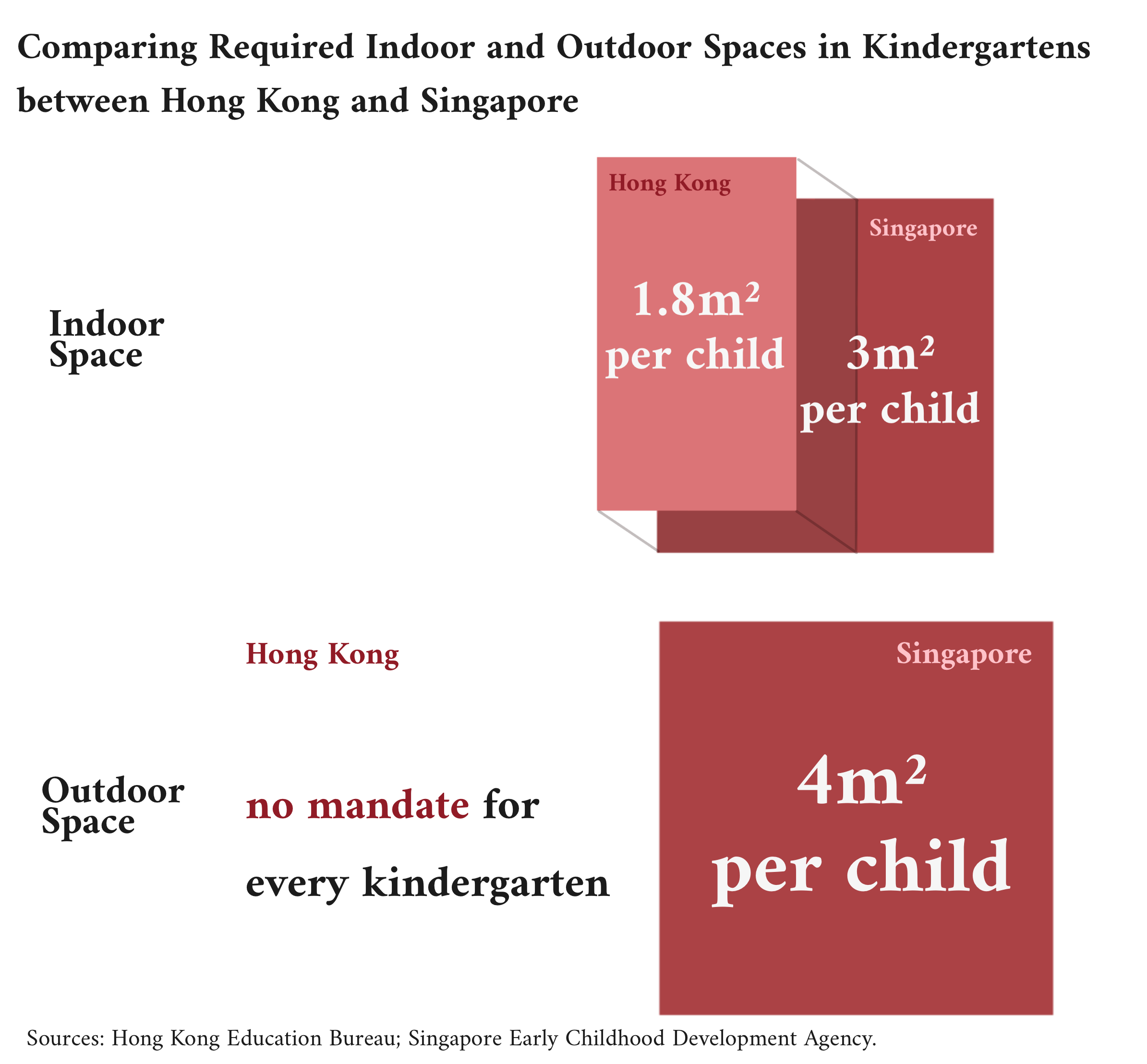Guess who would run the farthest in a 9-minute race, today's Hong Kong kids or a previous generation?
Boys from 1999, who could become fathers by now, are likely
to come out ahead. This suggests that current boys may not
match the physical fitness levels of their parents'
generation.
Those from the past could run 1590 meters in
nine minutes, whereas the
physical fitness test results
issued by the Education Bureau in 2015 indicate that boys
nowadays would fall behind by more than 120 meters.
A similar situation was observed among girls,
with a gap of about 22 meters.
The differences in lifestyle between digital natives and their parents' generation are the primary factors contributing to this trend.

From Playgrounds to Screen:
How Activity Levels Among Hong Kong Youth Are Changing
By Tse Man
The deteriorating running performance signals a
decline in youth's physical fitness and health. For
instance, the 9-minute run test is a crucial measure of
cardiovascular capacity, reflecting peak oxygen uptake.
When assessing cardiovascular capacity, children and
adolescents in Hong Kong ranked in the 31st percentile
globally, meaning that they lagged behind 61% of their
counterparts, as evidenced by the results of running
tests.
This performance has led to a grade of D in
'Physical Fitness' on the
2022 Hong Kong Report Card on Physical Activity for
Children and Adolescents
(Report Card), a report card issued to over 60 countries
by the
Active Healthy Kids
Global Alliance
since 2014.
In other aspects, such as tests measuring
skinfolds in triceps and calf, the subcutaneous fat
thickness in high school boys increased by 7.7%, while in
girls, it rose by 12%.
.jpg)
Sze Sze Hon, the Vice-Chairman of the Physical Fitness Association of Hong Kong and a lecturer of PE programmes at Hong Kong Baptist University.
“Insufficient physical activity and prolonged sedentary
time among our kids may explain this situation”, said Sze
Sze Hon, the Vice-Chairman of the Physical Fitness
Association of Hong Kong.
While the World Health Organization (WHO)
reports
that over 80% adolescents worldwide lacked adequate
physical activity in 2022, evidence suggests that this
lack of engagement in physical activities has been a
significant issue for Hong Kong's youth for over two
decades.
A 2005-2006 survey by the Department of Health revealed that around 60% of Hong Kong children aged 5 to 14 were sedentary for more than two hours daily, spending time on screens such as TV and video games.
Corresponded with sedentary behaviour was a considerable shortfall in physical activity. Less than 15.3% of respondents met the WHO's recommendations on physical activity for Health, which is 60 minutes of moderate- to vigorous-intensity physical activity daily (ideal physical activity level).
The questions then arise: As smartphones have become the most accessible screens for the younger generation in the past decade, has this situation worsened?
1. Continued Falling Physical Activity Level
Data shows that Hong Kong young people's physical activity
level lags behind the population's average.
According to the
Report of Population Health Survey 2020-22, young people in Hong Kong aged
from 15 to 24 engaged in
vigorous physical activity for an average of 2.6 days per
week, compared to the overall population average of 3.5
days. Even for moderate physical activity, the frequency for
young people was 2.2 days, lower than the overall mean of
3.2 days.
For the duration of daily physical activity, the
time young people spent exercising dropped from 103.7
minutes to 61.7 minutes in 2022, compared to the figure in
2015, a reduction of nearly 41%.
All age groups saw a significant drop in daily physical activity minutes from 2015 to 2022, with the 15-24 age group experiencing the largest decline.
When asked about the reasons for not doing exercise, almost half of young people responded that they were either too tired to do sports or too lazy to motivate their bodies. Another 33.6% of them said they had no time left for exercise.
Not in the mood for exercise, the reluctance to engage in
physical activity is also evident among students, with only
26% meeting the WHO's ideal physical activity level in 2022,
as indicated by a grade of D- in 'Overall Physical Activity'
on the Report Card.
In Asia, Japan was the only country to achieve a
grade of B- in overall physical activity in 2022, with up to
66% of children meeting the recommended amount of physical
activity.
On a global scale, the overall score for
physical activity among all 57 participant countries was D
in 2022. As reported by WHO, Not being in the mood for
exercise can be a global issue.
2. “I am not in The Mood for Exercise, so I Choose to Play My Phone”
Waking up at 7 a.m., the 18-year-old boy started another school day with only five hours of sleep.
Cyril Cheng, a Form 5 student at a local aided secondary
school in Tin Shui Wai, did not sleep until 2 a.m. His phone
data showed that he had been using his phone for the three
hours preceding bedtime. This nocturnal pattern has become a
regular occurrence for him.
Over the past week, Cheng's daily phone usage
averaged 11.5 hours, with Instagram accounting for nearly 12
hours of his total screen time that week.

Cheng's screen time data showed that he had been using his phone for the three hours preceding bedtime.

Social media accounted for around 30% of Cheng's total weekly screen time.
"I'm too tired to engage in physical activities," he
confessed. Instead of mooving his body, Cheng opted for
scrolling through social media platforms to stay connected
with friends, which consumes little energy.
He attributed this fatigue to the demands of
school and his involvement in a STEM project, leaving little
room for exercise in his daily routine. By weekends, he often
compensates for lost sleep until late afternoon, with minimal
physical exertion.
Similarly, Tsz Ying Choi, a Form 2 student, prefers to
spend her leisure time at her desk watching YouTube or tackling
homework on her tablet. Acknowledging the influence of digital
devices on her physical activity level, Choi maintained an
average daily screen time of 5 hours in the last week.
Eelyn Wong, who is in Form 5 and takes the Physical
Education elective subject, observed that some of her peers have
become addicted to phones or video games, leading them to
gradually quit exercising. “Choosing screens over sports, this
trend has become prevalent among my peers.”
Tsz Ying Choi siad a once-a-month ice skating session is enough for her.
Eelyn Wong is a sports lover who actively participates in diversified sports at school, such as volleyball.
When leisure activities gradually converge to static,
screen-based options, the choice of "get moving" is often pushed
further and further back.
“Digital device is the main challenge for getting
young people moving. Things only got worse after smartphones
came out. As children increasingly tether themselves to their
smartphones, it is more and more challenging to engage them in
physical activities,” said Hon.
Hon is also a lecturer teaching the Physical
Education and Recreation Management program at Hong Kong Baptist
University. She noticed that whether during active practising
sessions or static lectures, students are constantly clutching
their phones. How to capture their attention and engage them
without having to compete with their digital devices is a
problem for her.
She believed that the reliance on digital devices
among young people originates from their early childhood. “For
many parents nowadays, their parenting is to give children an
"electronic pacifier," such as tablets, TVs, and other
electronic devices.”
Although this approach frees up parents' time to
focus on other tasks, this early exposure to digital devices
fosters a strong dependency on children, leading to a lifestyle
in which sitting in front of a screen becomes normal.
As digital natives, only around 1/3 of Hong Kong's
primary and secondary students have followed the screen time
guidelines, which is no more than 2 hours of recreational screen
time per day, according to a score of D in 'Sedentary Behaviour'
on the 2022 Report Card. It deteriorated from a C in 2016.
The overall score in this aspect for all
participating countries improved slightly from D in 2016 to D+
in 2022.
This lifestyle has been exposing the younger
generation to an increased risk of non-communicable diseases
such as cardiovascular diseases and diabetes, according to the
WHO.
Then, the COVID-19 pandemic made this risk higher.
Students' physical fitness data, such as a 9-minute run, was not
collected completely during the COVID-19 pandemic. Hon estimated
that the outcomes might have deteriorated further than those in
2015, due to restrictions on outdoor physical movement and
prolonged daily online lessons.
According to
a study
conducted by various universities in Hong Kong, before the
pandemic, secondary school students were sedentary for an
average of 10.79 hours per day. This figure increased by about
an hour to 11.61 hours during school closures.
The overall daily screen time also saw a significant
increase, from 8.09 hours to 10.64 hours. Concurrently, the time
spent on exercises per day dropped by almost half, from 0.32
hours to 0.17 hours.
The
Education Bureau's Data
then showed that in 2021, just one year after the start of the
COVID pandemic, the overweight rate among Hong Kong middle
school students reached 26.8%.
The Active Healthy Kids Global Alliance highlighted that new
habits have been formed by children and teenagers around the
globe in response to the screen-centric indoor living new normal
after the pandemic.
Hon remarked, "Once these habits were formed, it's
uncertain whether they can be easily changed.”
3. Do Schools Contribute to Increased Physical Activity, or is the Reality More Complex?
Despite efforts by schools, the government and society
to promote physical activity, the reality paints a different
picture: Hong Kong students have experienced a continued
decline in physical fitness over the past decade.
Schools have organized periodic sports activities
and provided ample sports resources. For example, Hong Kong
got a B- in “Organized Sport and Physical Activity” in 2022
and progressed a successive two times from a C- in 2016,
meaning that 60.1% of local secondary school students engaged
in organised sport for at least one day per week. In this
area, Hong Kong is catching up with
Japan.
In addition, 67% to 73% of students in Hong Kong
have benefited from adequate sports facilities and resources
for physical education (PE) provided by schools, as indicated
by a score of 'B' in the 'School' aspect.
Not only have schools made an effort, but in the past decades,
the government has also carried out various sports promotion
programs at the school level, such as the School Sports
Programme since 2001.
By launching different sports training and
education projects and organising inter-school competitions,
this programme aims to nurture students' interest in sports,
boost their physical activity levels, improve their sports
performance and identify potential student athletes, as
outlined on
its website.
The community, including initiatives like the
Jockey Club's SportExplore Project, is
paying attention to advocating for sports promotion at
both the society and school levels.
After the collaborative efforts across various
levels, the question remains: Why has students' physical
fitness continued to decline?
Hon believed that with students lacking motivation for sports,
having physical education classes only once a week is
insufficient for both increasing their activity levels and
nurturing their interest in sports.
A study
conducted in 2019 across 10 local secondary schools reported
that the PE teaching time varied from 80 to 100 minutes in a
week or cycle. While this exceeded the minimum threshold, it
still fell behind the recommended PE duration observed in
other regions.
The latest
Physical Education Curriculum and Assessment Guide
updated in 2023 recommends that general PE constitute at least
5% of total lesson time in both primary and secondary
education curriculums.
Given that total lesson time amounts to
approximately 2,500 hours across three years of senior
secondary education, the expected PE teaching time should be
around 125 hours.
This figure in Japan stands at 262.5 hours, more than double
that of Hong Kong. Its allocation of PE lessons is on par with
that for Society according to the
Ministry of Education, Culture, Sport, Science and
Technology of Japan.
If the limited time allotted for physical
education does not indicate the problem, the quality of PE can
be another important index for assessing school PE
effectiveness.
Not many schools in Hong Kong have recorded active
policies, including daily PE, recess, and outdoor time, as
highlighted by
a
study. It also mentioned that among 26 local schools, only 18.5%
of PE class time was spent on activities that require students
to engage in exercises.
Regarding this situation, Cheng felt that the
teachers are primarily focused on getting students to
participate, without placing much emphasis on the quality of
PE classes.
Cheng has one 75-minute PE class in his weekly
timetable. His Apple Watch recorded his health and activity
metrics-everything from the distance he walks and runs to his
active energy expenditure and exercise minutes.
His data of a typical school day with PE class
revealed that his active energy expenditure during the PE
class was under 120 kilocalories, whereas that figure during
the lunch break was 106 kilocalories.
“Teachers focus more on techniques teaching and our participation
than physical exertion,” said Cheng. “They would not push us too
hard to pursue higher learning outcomes because they do not want
to hinder our interest and motivation.”
Another indicator of PE intensity is the "exercise
minute", every full minute of movement at or above the intensity
of a brisk walk recorded by an Apple Watch. Cyril's exercise
minutes did not reach the ideal level, even on days with PE class.
The patterns of exercise minutes were in line with the
energy expenditure's.
His moderate-intensity exercise minutes were fewer
than 6 minutes, however, the figure during lunchtime was
17 minutes.
Relatively low-intensity PE classes were also observed by two girls.
Wong noticed that the intensity of PE classes is only
moderate, as the teacher often interrupts the exercises to provide
explanations, leading to frequent breaks in physical activity.
Though PE classes may not help students achieve the
ideal physical activity level, Cheng, Wong, and Choi all
highlighted the diversity in PE teaching content, mentioning that
the curriculum often includes outdoor runs, dancing, jump rope,
and ball games.
Besides the quality of PE classes, their quantity can be
inadequate.
Wong with an established exercise routine, thought
that a single PE class per week is unlikely to inspire those
without regular exercise habits to develop an interest in physical
activity.
“Because they even showed unwillingness to exercise in
PE class, it is unrealistic to expect them to do sports during
their free time,” said Wong. “On the other hand, for those who
enjoy sports, PE classes offer a great opportunity to explore
various forms of exercise.”
“I think at least two classes are needed to encourage
students to be more active, build exercise habits, and avoid
prolonged sitting.”
Both Cheng and Choi, however, worried that increasing
the number of PE lessons on the schedule would disrupt other
subjects' teaching plans.
Data suggests that even if the intensity of PE classes
is insufficient, it can still mitigate students' sedentary
behaviour. Having multiple PE classes per week can be beneficial.
Hon highlighted that this sit-oriented study mode
promotes habitual sedentary behaviour. Some Western countries have
adopted a 'sit and move' mode using sit-stand desks to reduce
sedentary time and increase physical activity levels.
A
2022 study
investigated the benefits of this intervention for Hong Kong's
primary school children, showing improvements in physical activity
levels, physical literacy, sleep quality, and executive
functioning.
Creating an active environment for students is
beneficial, but changing learning modes may not be feasible within
Hong Kong's cultural context, according to Hon.
Some private international schools in Hong Kong have
implemented better active policies. Yet these schools tend to have
higher tuition fees and stricter admission requirements compared
to ordinary schools.
Jill Xu, a young mother, chose an international school
in Lam Tin for her 9-year-old son because it offers a sports
session every day after lunch and a mandatory swimming class once
a week. She believes this emphasis on PE will instil confidence,
health, and better interpersonal communication skills in her son.
"Compared to the costs of his extracurricular sports
classes each year, the nearly HK$200,000 for annual tuition fees
seem minor."
Xu enrols her son in squash and basketball classes
taught by private facilities once a week.
Hon holded that the gap in physical activity degrees
between children who are from different levels of socioeconomic
status will extend. “Economic resources can offer children more
opportunities in advanced PE. Besides money, the awareness and
perception of PE differ across families with varying socioeconomic
status.”

Jaden, the one on the right, is Xv's son. Xv spent around HK$20,000 to have him attend private institutions for sports trainings.

A routine basketball training session held by a private training institution. Xv believes that such team sports can develop children's social skills.
4. The Underlying Reason of Physical Inactivity Traces Back to Early Childhood PE
In addition to digital devices, Hon believed that the
underlying issue of physical inactivity among youth lies in
the inadequacy of early childhood PE in Hong Kong.
For parenting, beyond the use of electronic babysitting,
today's parents may not be that physically fit themselves,
limiting their ability to set a positive example for their
children regarding physical activity.
Data shows that besides the younger generation,
physical activity among people aged between 25 and 54 has also
seen a sharp decline over the past decade.
In addition to education at home, kindergarten
environments may not be conducive to fostering children's
physical activity.
Hon explained that kindergartens in Hong Kong are
often small, providing limited space for free play, which is
crucial for developing big muscle groups in children. These
muscles are essential for gross motor skills, which coordinate
activities such as walking, running and throwing.
"Gross motor skills serve as the foundation for
children's future sports performance, encompassing
coordination, reaction time, balance, and strength. Failure to
cultivate these skills during early childhood can pose
challenges for catching up later on."
As a result, some children exhibit poor
performance in sports, leading to a lack of interest and
confidence in physical activity. Hon posited that "proficiency
in something tends to breed interest, whereas repeated
failures can suppress enthusiasm."
In accordance with the
2023 Operation Manual for Pre-Primary Institutions
issued by the Education Bureau, the minimum indoor activity
area for institutions catering to children aged 2 to 6 is set
at 1.8 square meters, with outdoor play areas not being
mandatory for every kindergarten.
In cases where outdoor facilities are unavailable,
indoor play areas should occupy at least 50% of the total
classroom space.
A 2015 Legislative Council document titled
"Consultancy Study on Accommodation Requirements for
Kindergartens
(LC Paper No. CB(4)1266/14-15(03))" once recommended that the
ideal indoor activity area for kindergartens should be between
2.16 and 2.52 square meters per child, noting that the
majority of kindergarten staff believed the space available
for physical movement among students, whether indoors or
outdoors, was inadequate.
This figure is not specified in Japan, but in
Singapore, it is defined in the
Early Childhood Development Agency's guidelines. The requirement for outdoor space for
gross motor development
activities should be 1/6 of the centre's capacity at 4m² per
child or 40m², whichever is greater. The indoor space required is 3m², almost 1.7 times Hong Kong's counterpart.

Aside from limited space, Hon also believed that
Hong Kong parents tend to be conservative, potentially leading
to misconceptions about free play, which may be perceived as
lacking in structure. Such conservative attitudes, akin to
those observed in the "sit and move" classroom approach, may
hinder feasibility.
When asked for suggestions to improve the activity
levels of the younger generation in Hong Kong, Hon emphasized
the importance of improving childhood PE. "Fostering
children's interest in sports from a young age and minimizing
their exposure to digital devices is crucial," she said.
Since 2014, Hon has served as a convener and project advisor
respectively for two major children fitness promotion
projects, Jockey Club Keep-Fit Formula for Children and
Jockey Club Home-School Physical
Fitness Academy for
Kindergarteners.
These programs aim to create a supportive
environment for physical fitness development at both home and
school by strengthening collaboration between families and
schools, improving the professional skills of educators in
physical fitness, and raising parents' awareness of the
importance of physical fitness.
Between 2015 and 2018, a total of 288 physical fitness lesson plans for kindergartens and primary schools and 55 parent-children games were designed by Jocky Club Keep-Fit Formula for Children programme to help foster children's physical activity and build a healthy lifestyle.
According to the findings of the Jockey Club Home-School
Physical Fitness Academy for Kindergarteners' research in
2022, the participation of 3,055 preschoolers in the program
led to improvements in performance across five physical
fitness tests, compared to similar research in 2016.
Hon said, “The root cause lies in the lifestyle
changes brought by screen time, with sedentary behaviour
becoming the norm both at home and in schools. Various sectors
of society are making efforts to address the issue of physical
inactivity among our younger generation.”